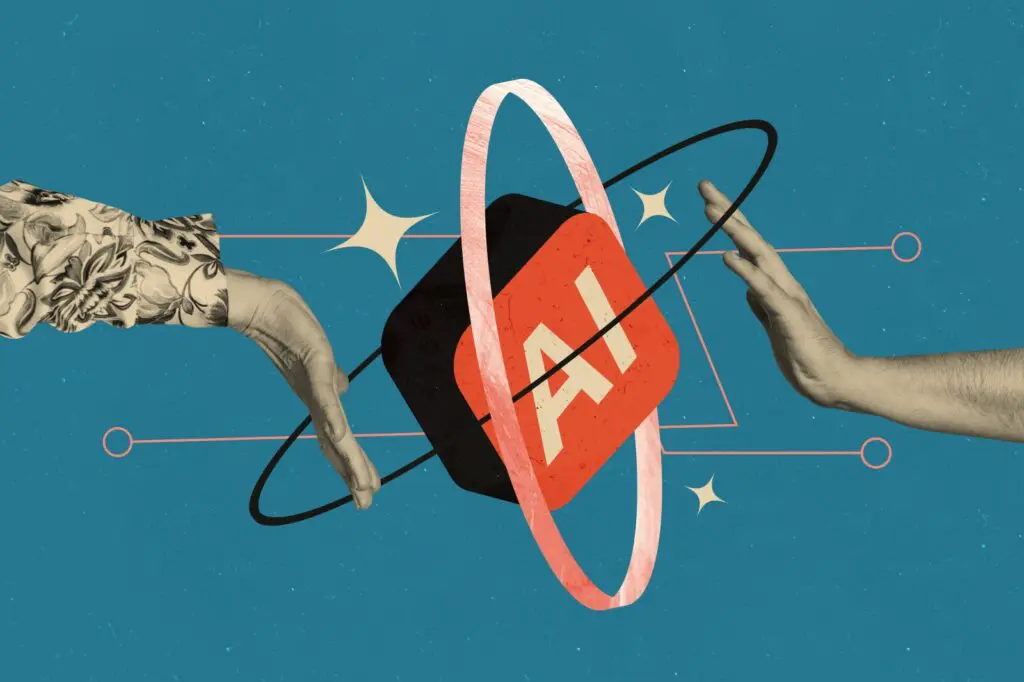Clear Messaging and Smart Tracking Are More Important Than Ever
Google’s rollout of AI is no longer a glimpse into the future. It’s happening now.
Google released AI Mode, a generative AI accompaniment to their Search experience. Powered by Gemini, AI Mode gives users in the United States the opportunity to interact with the search engine much like ChatGPT, Perplexity, and others.
The traditional Google search experience was already disrupted thanks to AI Overviews and features such as People Also Asked, which in turn increased “Zero Click Searches” significantly. As organic search results are pushed down the page, users discover the answers to their questions without ever clicking through to a website. Consequently, organic traffic is dropping.
Yet, in traditional SERPs, ads have still had prominent placement driven by keyword strategies and selective targeting. With AI Mode, all that is likely to change.
It’s safe to say, the rules of engagement for PPC campaigns are changing fast.
But here’s the truth: no matter how AI reshapes the SERP, performance marketing still lives and dies by the same principle. Your ability to track and understand return on ad spend (ROAS).
The AI Shakeup Means Less Visibility, More Complexity
Let’s be blunt. Paid ad visibility in traditional search layouts is challenged when AI Overviews are present. CTR drops. Costs rise. Attribution gets murkier.
Google’s AI Mode is accelerating this change with multimodal, chat-style search. Users will no longer type short queries and then scan blue links on a SERP to find which option answers their questions. They’re going to have a conversation.
A good argument can be made that many (or most) of the searching that happens in AI is driven by Top of the Funnel informational searches. People currently interact with generative AI to explore an idea or learn more about a topic, which means they aren’t sales-qualified leads (yet).
However, it’s during the course of a conversation with AI that they discover the need to purchase a product or service.
So what happens as they move lower in the funnel? The chatbot starts making recommendations from a search it conducts, which again favors companies with a solid SEO strategy.
Up until now the value of PPC has been to place your company’s advertisement at the top of the SERP page to achieve a level playing field with competitors that have better SEO. But how do you show up as the search landscape shifts to favor more generative AI experiences?
Goodbye Keywords, Hello Context
The lionshare of Google’s revenue comes from advertising. So it stands to reason that they will introduce advertising into AI Mode sooner rather than later. This will inevitably shake up the keyword-driven PPC strategies companies use today.
What happens when your targeted keywords no longer make sense in the context of a much larger conversation?
For example:
Previously a bike store may have targeted searches for “dual suspension mountain bikes”.
But a conversation with AI Mode may run something like this:
“Can you tell me the benefits of keeping my Trek hardtail mountain bike versus upgrading to a dual suspension mountain bike?”
Certainly the user is thinking about buying a bike. He’s also thinking about keeping his current one.
The conversation may further unfold:
“I’ve heard that it’s better to learn how to ride trails using a hardtail, because you choose your paths better and take less unnecessary risks. It supposedly teaches you to become a better rider. At my age, I’d like to avoid wrecking, and I’m afraid a dual suspension will encourage me to ignore rocks and roots in my way.”
Now what’s the keyword?
AI Chatbots regularly read and analyze prompts for context and intent. For advertising purposes, a conversation would be scanned in real time to determine the potential for ads. The intent of the user would then be mapped against a set of keywords that can be targeted.
It remains to be seen how that changes the buying and structuring of ads, but the research so far on generative AI searches suggests much fewer opportunities to introduce your website to a new audience.
However, when people do click through, they tend to be much lower in the funnel. Fewer clicks, higher intent.
Advertising Success Depends On Strong Infrastructure
The model of PPC advertising may shift, but the fundamentals haven’t.
Moving forward, there is a stronger demand to make each session convert into a sale.
If you want to spend ad dollars wisely, your digital foundation needs to be rock solid. That means:
1. Clear Messaging on Your Website
It doesn’t matter how much traffic you drive if visitors don’t know what you do or why they should care.
Your website needs to speak to human beings, not algorithms. Cut the jargon and address real problems. Make your value obvious within seconds. Whether someone lands on a landing page or your homepage, your messaging should answer three questions fast:
- Who is this for?
- What problem does it solve?
- What should I do next?
2. An Intuitive Conversion Funnel
It already holds true that if your website is clunky, you’re wasting marketing dollars. With PPC, every click costs you money. Don’t make people work to give you their business.
Focus on a clean, logical flow from interest to action:
- Simple navigation
- Fast page loads (especially on mobile)
- Prominent calls to action
- Streamlined forms
- Easy checkout or scheduling
A great ad might get someone in the door. A great funnel gets them to commit.
3. Bulletproof Conversion Tracking
This is where most advertisers drop the ball.
You need to know not just who clicked, but who booked, bought, or contacted you. That means setting up conversion tracking in Google Ads, syncing it with Google Analytics, and (where possible) integrating your CRM or booking system.
Here’s the kicker: many third-party booking platforms claim to track acquisition sources, but often obscure or misattribute traffic. If all of your bookings look like they’re coming from “Direct” or “Referral,” you’re flying blind.
Don’t trust the default dashboards in those platforms. Audit your tracking. Use UTM parameters and tag your events so you know what works down to the dollar.
And let’s not forget call tracking. If you have a phone number on your website, you should employ some form of call tracking software to clearly determine who called, how they found you, and (bonus!) a recording of the conversation for training purposes.
4. Solid Analytics to Guide Strategy
AI is changing how people search and how they engage with websites.
Good analytics will help you identify which queries are driving conversions and which pages on your website could be wasting precious advertising dollars. Look at time on page, bounce rates, and exit paths. Use heatmaps and behavior flows to see where people hesitate or fall off.
When you understand how users interact with your site, you can optimize landing pages, refine messaging, and cut waste from your ad campaigns.
Precision Is The Future of Advertising
As AI takes over more of the search experience, your ads won’t live in the same old places. You won’t always get clean attribution. And visibility alone won’t be enough.
But none of that changes the core truth: if you know what works, you can invest confidently. That means building a smarter website. Tightening your conversion funnel. Honing your messaging. And tracking everything with ruthless precision.
AI might change how people find you, but it’s your job to make sure they book once they do.
Need a team to guide you through the changing digital landscape? Divining Point helps companies make sense of the data and drive qualified buyers to your door. Contact us today and let’s future-proof your business together.

